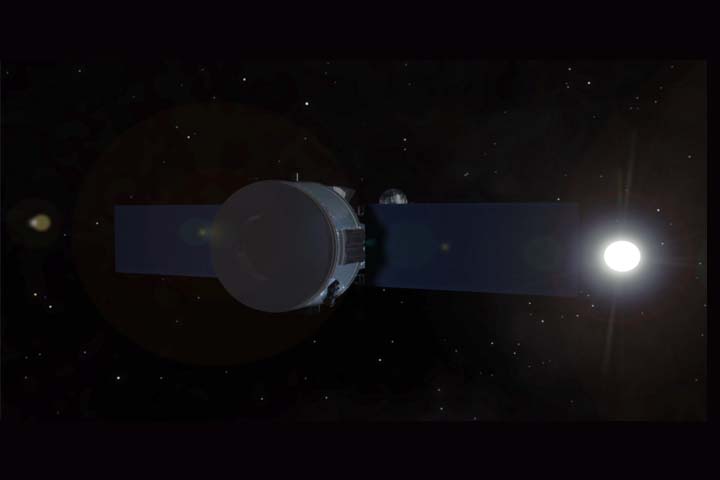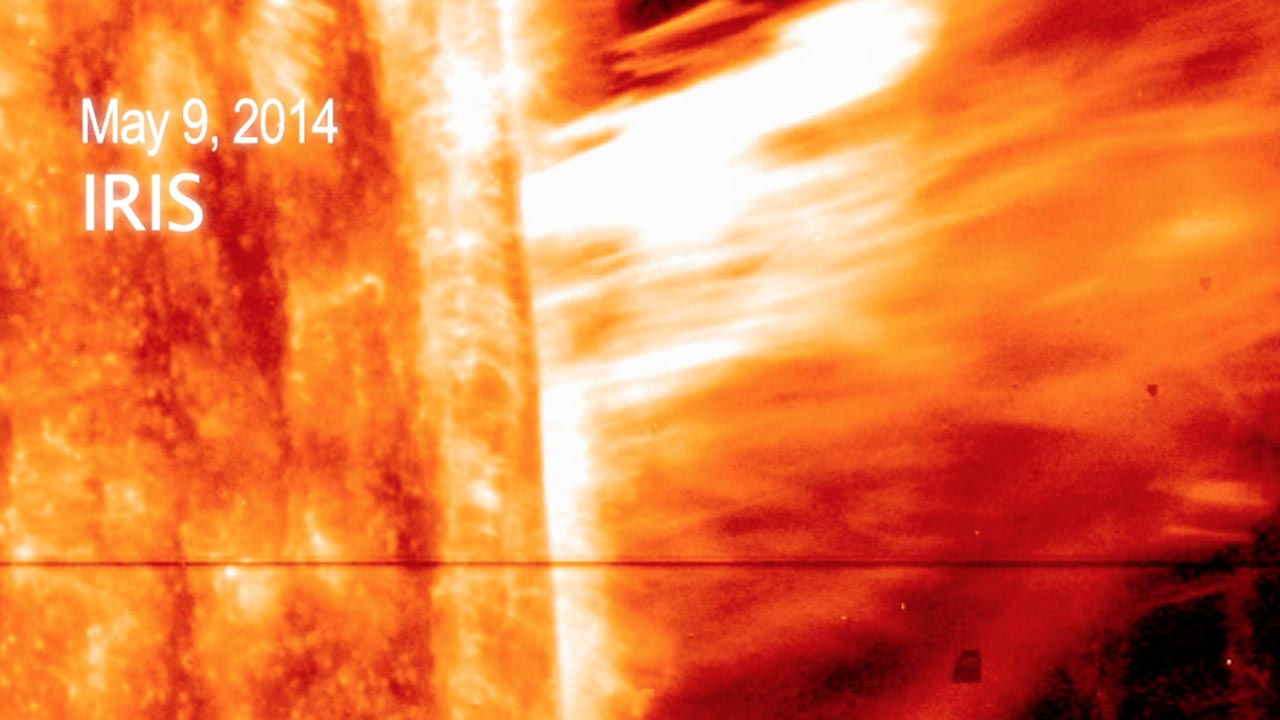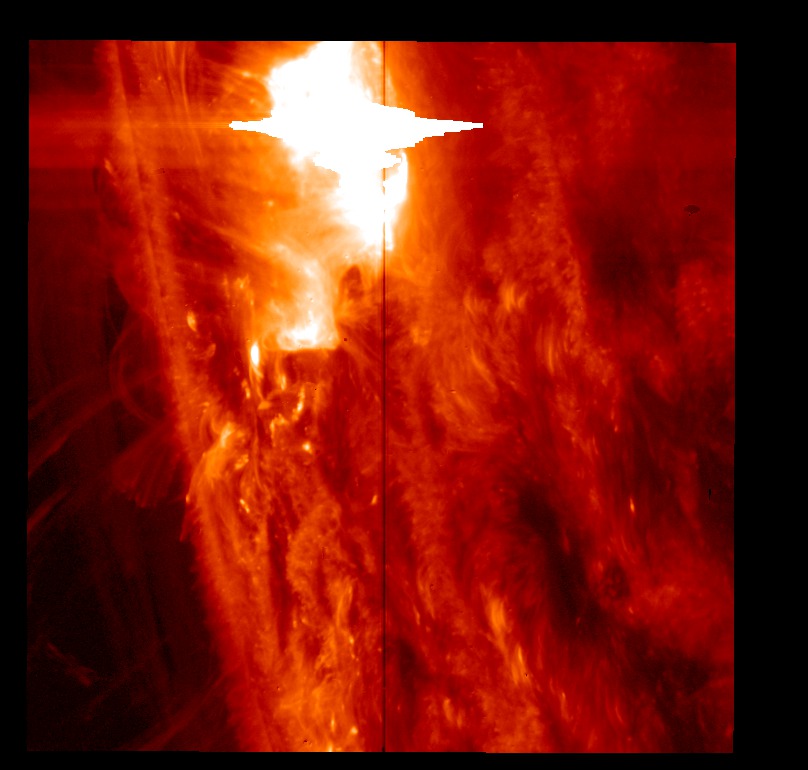IRIS close-up of a solar flare
The Slit-Jaw Imager (SJI) aboard IRIS (Interface Region Imaging Spectrograph) observes a tiny region of the Sun at an image resolution (0.166 arc-seconds per pixel) almost four times higher than the Solar Dynamics Observatory (SDO) (0.6 arc-seconds per pixel). In addition, IRIS has a narrow slit in the imaging plane (the thin, dark vertical line in the center of the inset) which directs some of the light to a spectrograph which allows solar physicists to determine velocity and temperature of the solar plasma.
In this zoom-in from a full-disk view of the Sun from SDO, the imager is observering the Sun at a wavelength of 133nm (1330 angstroms). The imager field-of-view is moved across the solar disk in four steps, allowing the slit to pass over different regions of the Sun to determine the properties of the plasma.
Note: IRIS and SDO are in very different orbits. You can see samples of the orbits at The 2013 Earth-Orbiting Heliophysics Fleet. IRIS is in a near-Earth orbit, while SDO is much higher at geosynchronous orbit. This difference in camera location creates a small parallax between the images composited from these two cameras.
Zoom in combining SDO imagery at 17.1 nm and IRIS/SJI at 133nm.
Zoom in combining SDO imagery at 30.4 nm and IRIS/SJI at 133nm.
Zoom in combining SDO imagery at 160 nm and IRIS/SJI at 133nm.
Credits
Please give credit for this item to:
NASA's Scientific Visualization Studio
-
Animator
- Tom Bridgman (Global Science and Technology, Inc.)
-
Producer
- Genna Duberstein (USRA)
-
Scientists
- Bart De Pontieu (Lockheed Martin Solar and Astrophysics Lab)
- Adrian Daw (NASA/GSFC)
-
Project support
- Laurence Schuler (ADNET Systems, Inc.)
- Ian Jones (ADNET Systems, Inc.)
-
Writer
- Karen Fox (ADNET Systems, Inc.)
Release date
This page was originally published on Friday, February 21, 2014.
This page was last updated on Wednesday, May 3, 2023 at 1:51 PM EDT.
Missions
This visualization is related to the following missions:Datasets used in this visualization
-
AIA 304 (304 Filter) [SDO: AIA]
ID: 677This dataset can be found at: http://jsoc.stanford.edu/
See all pages that use this dataset -
AIA 171 (171 Filter) [SDO: AIA]
ID: 680This dataset can be found at: http://jsoc.stanford.edu/
See all pages that use this dataset -
AIA 1600 (1600 Filter) [SDO: AIA]
ID: 757This dataset can be found at: http://jsoc.stanford.edu/
See all pages that use this dataset -
Slit-Jaw Imager (SJI) [IRIS: Imager]
ID: 816This dataset can be found at: https://iris.lmsal.com/data.html
See all pages that use this dataset
Note: While we identify the data sets used in these visualizations, we do not store any further details, nor the data sets themselves on our site.


